How to feed cabbage in June?

Regardless of what kind of cabbage you grow, Brussels sprouts or white cabbage, early or late, you will still have to supply it with fertilizers with a high content of nutrients useful for it. You can learn about what drugs to use for this and how to make them in this article.
What drugs should I use?
For the active growth of cabbage, it will not be possible to limit oneself to one watering. It will be best to resort to the use of fertilizers. The most beneficial effect on the plant is feeding with the content of phosphorus and potassium. In addition, you can feed cabbage using mullein, bird droppings, nitrophoska and urea. Urea has a particularly beneficial effect on cabbage, becoming a source of nitrogen for it and improving the development of its leaves, as well as strengthening them.
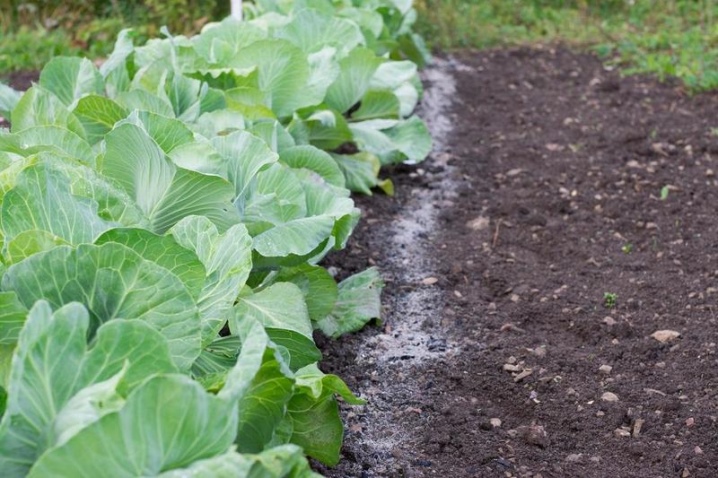
However, before applying fertilizers, you need to familiarize yourself with how and when to use them, otherwise there is a risk of harm to the plant.
So, in June and towards the end of the season, in August, it is recommended to use fertilizers that contain phosphorus. It is thanks to this component that the cabbage grows sweet and juicy. If there is a deficiency of phosphorus, then the cabbage foliage begins to darken and curl up, and its taste is noticeably bitter. If this component is added to the second top dressing, then it is not recommended to water the root, it is enough just to process the space between the beds.
If the cabbage does not grow well, then it will be appropriate to use fertilizers containing boron and molybdenum. These are, for example, ammonium molybdate and superphosphate with molybdenum in the composition. They help increase the size and weight of the cabbage, its density and healthiness. In addition, the use of these substances provides a strong plant immunity and resistance to attacks by various insects.

If there is a lack of molybdenum in the ground, then the cabbage foliage begins to deform, and its top rots. Boron deficiency is fraught with the appearance of brown spots on the plant. It is recommended to introduce these elements for the first time when the first leaves are formed on the sprouts. Boron and molybdenum are also good for spraying your plants. So, boric acid and ammonium molybdate are diluted for this in a bucket of water.
Molybdenum can also be used in combination with phosphorus. In this case, they are introduced during planting in open ground.
You can ask for help and ready-made formulations, which can be purchased in suburban stores. Among them, experienced gardeners especially highlight the top dressing "Zdraven" and "Agricola".
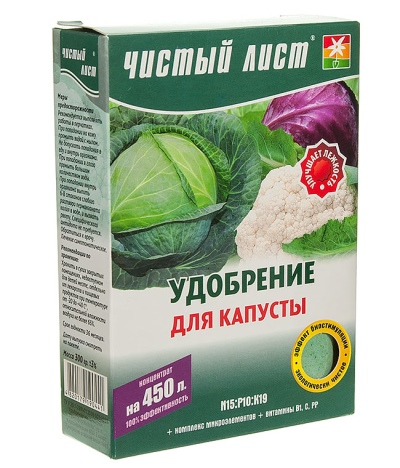
Folk remedies
Most summer residents do not like to use chemical fertilizers, due to their toxicity, and therefore resort to folk solutions and fertilizers, which can be made with their own hands at home. However, for this you need to accurately calculate the required amount of each of its components.
For example, in June, it is recommended to treat the plant with a solution containing boric acid. It will have a beneficial effect on the growth of cabbage. The recipe for this mixture is simple: 5 milliliters of boric acid must be dissolved in 250 milliliters of boiled water. Before using this liquid, it must be diluted again with water.
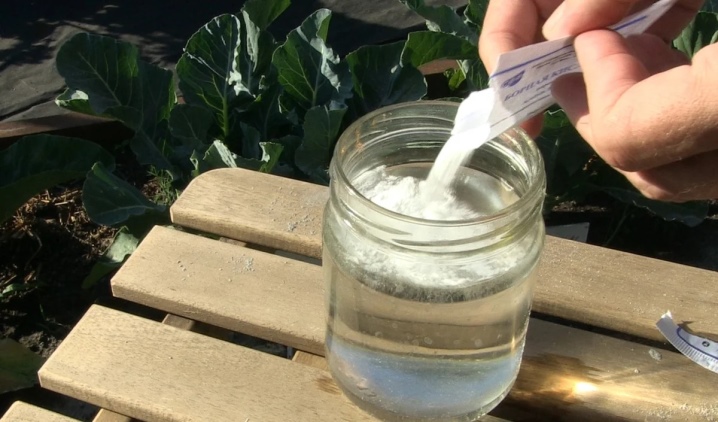
For active growth of cabbage, you can also use yeast, which is rich in phosphorus, nitrogen and other useful substances. They must cultivate the land 2 times at intervals of a month.Yeast is used as follows: it is dissolved in water, after which a day is given so that it is well infused, and the fermentation process begins. After that, the solution is again diluted with water in a ratio of 1 to 10. Watering with this solution should be carried out at a later time, in the evening. Please note that yeast helps to stop the absorption of potassium, and therefore the ground must be sprinkled with wood ash a couple of days after processing.
Baking soda also works well. It helps prevent many viruses. It is not difficult to make a solution with its content: soda is dissolved in water, after which cabbage beds are watered from a watering can.
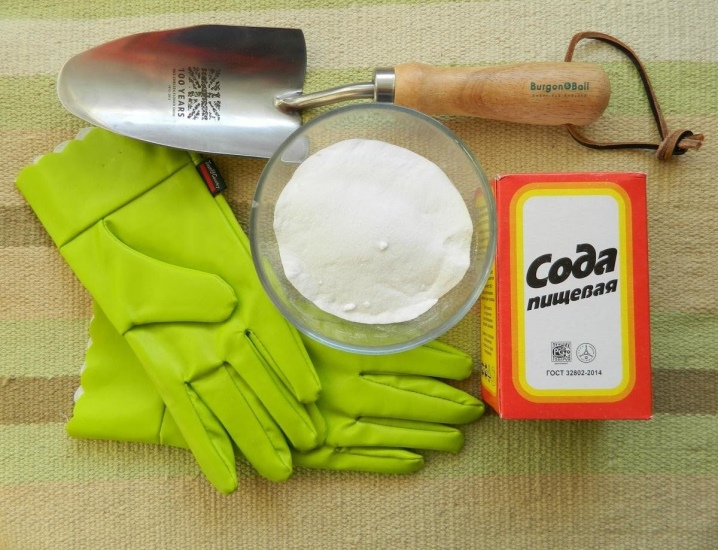
Eggshells can also be beneficial for fertilizing cabbage, as they help replenish calcium and other nutrients in the soil. To prepare the fertilizer, you need to cover the shell to crush it, after which you need to sprinkle it on the ground. You can make a solution out of it, for this you need a shell from 3 eggs. It must be diluted with water and left to infuse for 3 days.
Iodine is an important helper in cabbage cultivation. It is he who helps to strengthen the health of foliage and the firmness of the head of cabbage. In addition, iodine has medicinal properties, due to which the plant's resistance to various kinds of diseases increases. It is not difficult to make a solution with iodine: you need a liter of water and 2 drops of this product. With the help of the ready-made mixture, you can make foliar dressing.
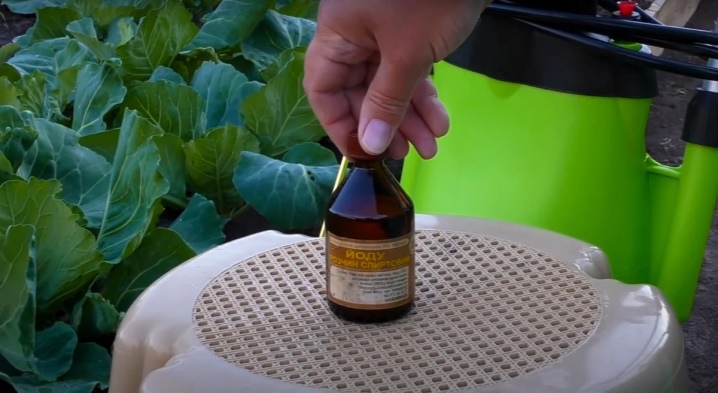
Features of the introduction
Fertilizing cabbage depends on a large number of factors. So, if the soil is not very fertile, then wood ash, humus and superphosphate must first be added to the hole. Then, in the middle of the second week after planting, it is necessary to process the planted plants with chicken droppings, herbal tinctures or mullein.
If the land is fertile and contains a large amount of nutrients, then the first feeding is carried out 2 weeks after planting. At the same time, potassium chloride, ammonium nitrate and superphosphate are diluted in the water for irrigating cabbage. For growth, you can add a mixture containing chicken manure dissolved in water in a ratio of 1 to 20.
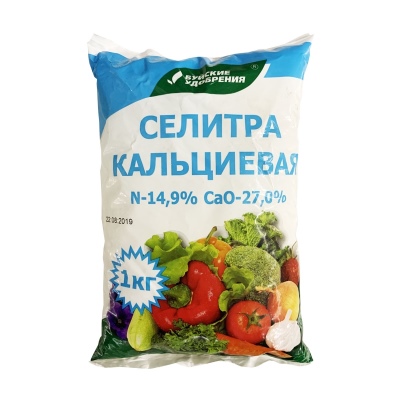
In the second top dressing, you can use wood ash and superphosphate, which must be diluted in water before use. If you missed all these stages, then you can feed the planting in the 3rd week of the planted plants growth. To do this, use a solution that includes manure. It is poured with water, after which it is left to infuse for a day. Next, the mixture is used to process the roots of each of the plants.
Can be used for feeding and urea. It is allowed to use it immediately after planting the plant, as well as 2 weeks later, when the cabbage hardens in the ground and begins to gain strength.
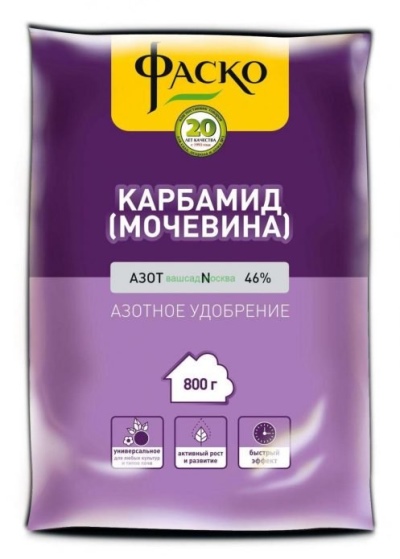
The third feeding of cabbage is carried out when the head of cabbage begins to form. During this period, the plant needs more nutrients. Top dressing is carried out using mullein and superphosphate, while you should not forget about good watering and hilling at this time. If during this period there is a lot of rain, then the moisture for the plant, on the contrary, should be limited.
The video below will tell you how to feed cabbage.













The comment was sent successfully.